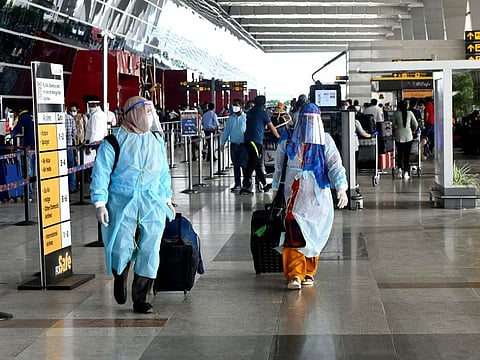India's 'air bubbles' are placing UAE airlines at a severe disadvantage
India's extension of commercial flight ban until year-end makes it more difficult

Dubai: India’s decision to extend its ban on scheduled commercial flights will further delay UAE airlines’ chances to pick up demand on these routes.
Because right now, India is only operating flights under ‘air bubble’ agreements and which gives the country’s airlines an advantage. It is now an open secret that these arrangements are a form of indirect support given to the country’s beleaguered airlines.
The ‘India-first’ approach on certain routes ensures that India’s carriers do not face direct competition from operators in the UAE or other countries. “In the near-term, foreign operators will suffer due to restrictions on flights by the government and a preference for direct flights by fliers,” said Sanjiv Kapoor, senior advisor at Alton Aviation.
No knowing when
India is yet to give a firm nod as to when it will resume all scheduled flights. As of now, there have been two extensions after all such services were cancelled last March as the country got down to curbing the spread of COVID-19. (Domestic services resumed from May 25.)
“The large flows of worker traffic will be disrupted by the continuing ban,” said John Strickland, Director of JLS Consulting.”
Built in advantages
Even prior to the pandemic, blue-collar workers had a strong preference for Indian low-cost carriers. “Middle East low-cost carriers (LCC) are not making much headway as they are not viewed as attractive relative to Indian LCCs," said Kapoor. "And [they] are not as widely available or distributed in India - market presence and visibility are quite low.”
This might explain why Ras Al Khaimah Airport agreed to be Spicejet’s regional hub during a particularly difficult time for the industry. “The commencement of SpiceJet passenger flights into RAK Airport is a significant step forward in helping the UAE get back to a normal footing in the wake of the pandemic,” said Sanjay Khanna, CEO of Ras Al Khaimah International Airport, in a statement last week.
“The Indian expatriate community in the UAE numbers almost 3.5 million people and constitutes 27 per cent of the population, making connectivity between our countries an imperative.”
Temporary support
India will have to look further than air bubbles to alleviate the pain of the country’s airlines. The government is yet to announce any relief measure for the industry, and airline sources have been quite vocal that this will imperil most carriers.
“To compete in the long-term for long-haul traffic, Indian carriers need to recapitalize, scale up, cut costs and, in most cases, run them much better,” said Kapoor. “The government needs to fix structural issues on the ground with infrastructure, taxes, hub airport design and attractiveness, as well as some obsolete and inefficient regulations.”
The pandemic has thus exposed major chinks in Indian aviation, which until March was the fastest growing within Asia.
Not so dire
But some are willing to give India’s aviation prospects some leeway. John Boyd, founder of the consultancy Boyd Company, says the extension of commercial air travel ban is only a “hiccup” in the long-term “given the huge, untapped potential of India's overall travel and tourism sector, again fuelled by both business travel as well as tourism-related.
“Leaders in India's travel and tourism industry have been using the downtime caused by the pandemic to re-tool the industry and get state and central government bodies on board with new policies.
This is “encouraging investments in the country's tourism industry - seen to have great economic upside for India and carriers like Emirates.”
Sign up for the Daily Briefing
Get the latest news and updates straight to your inbox







